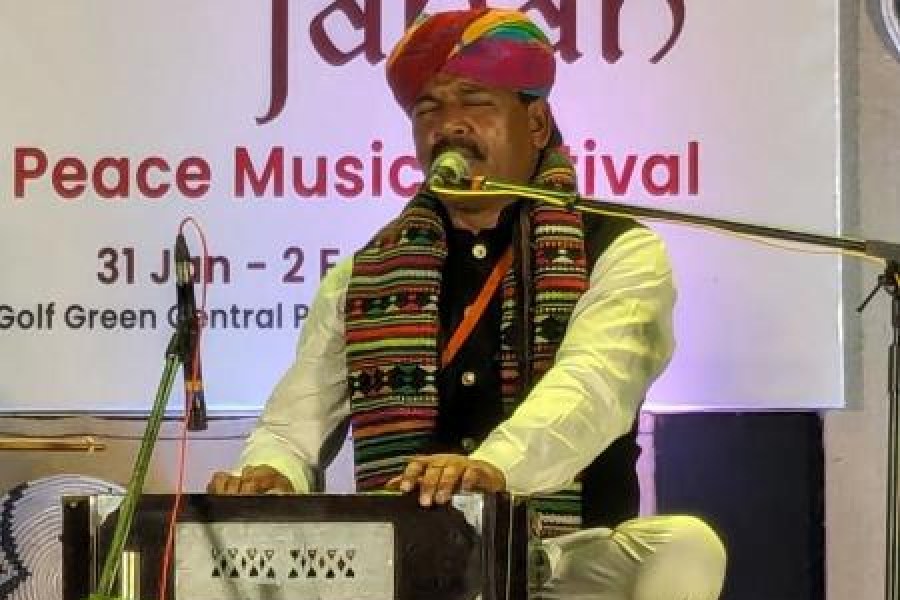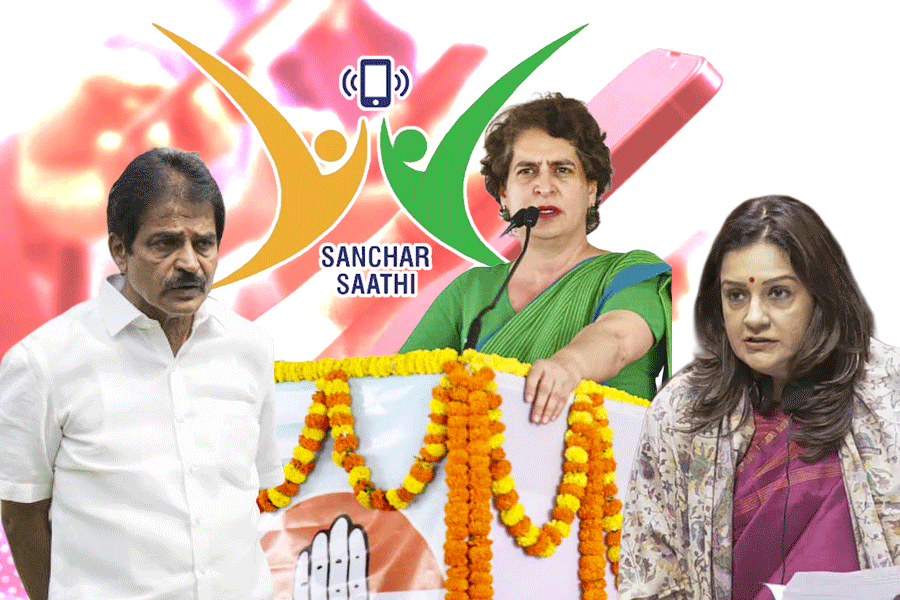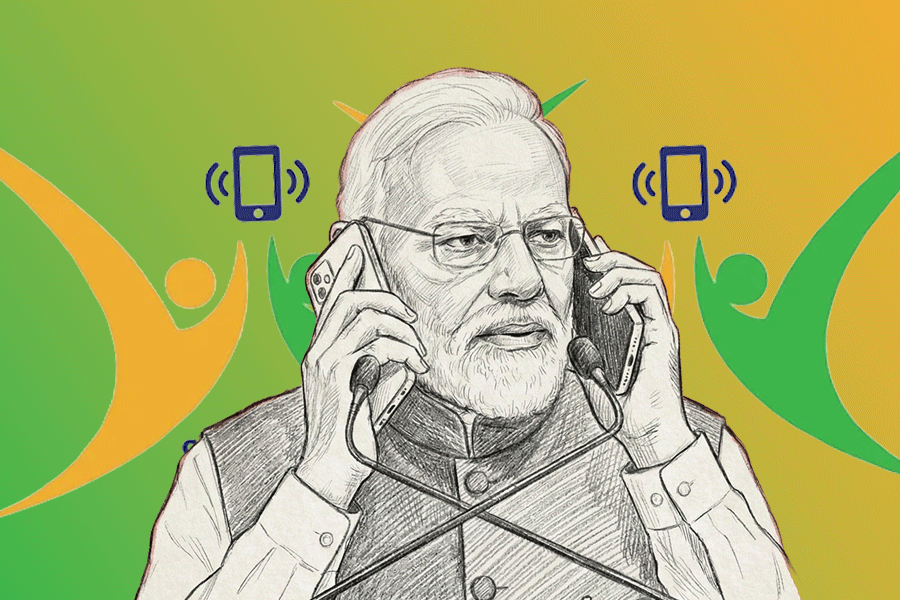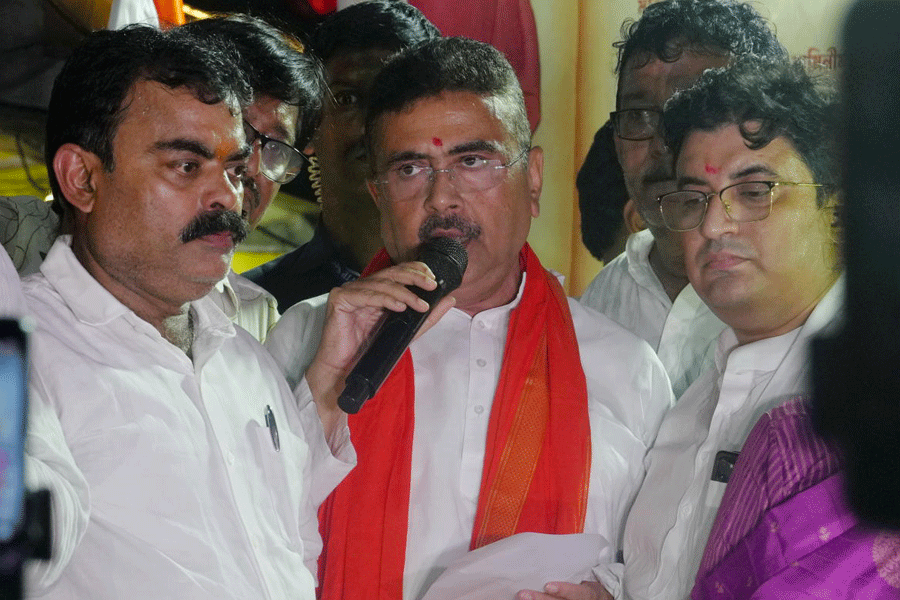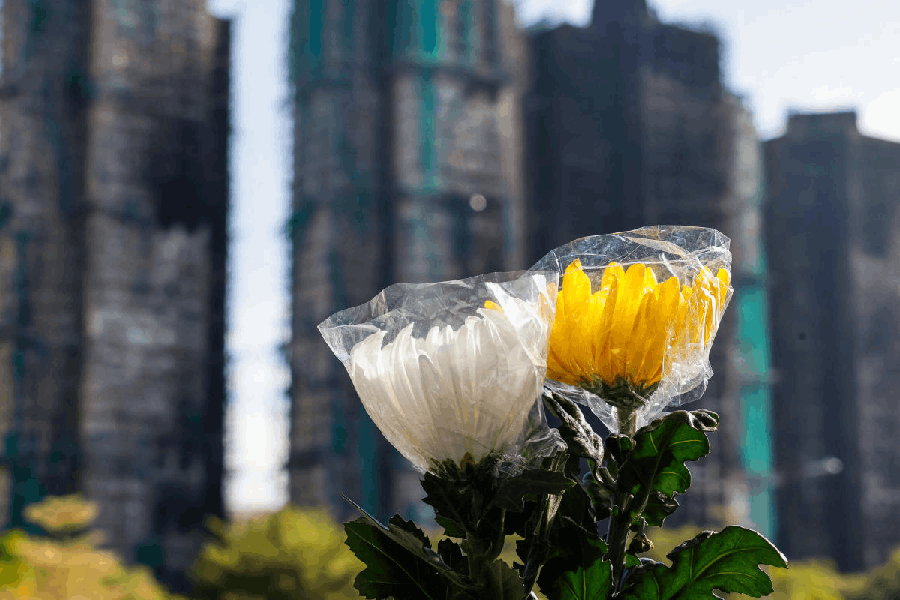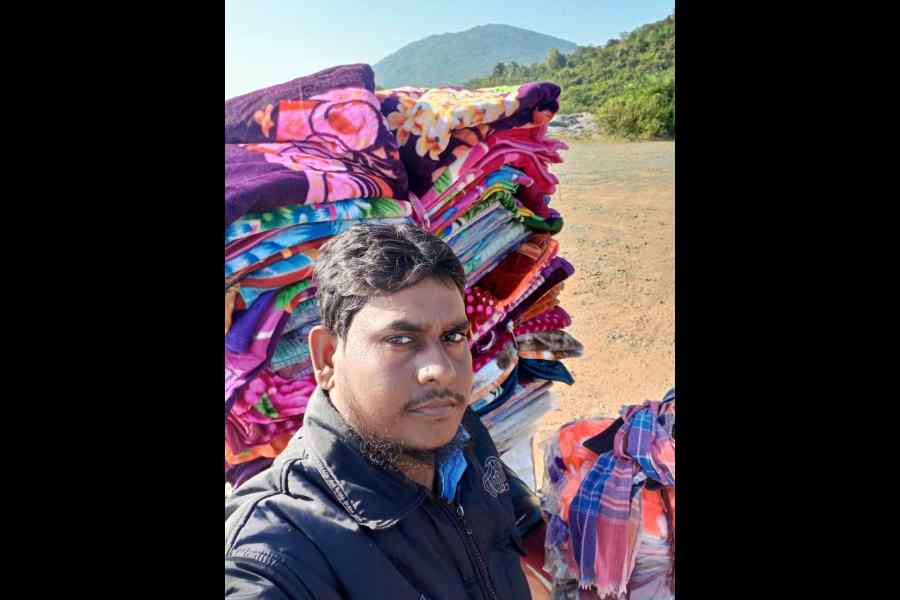The day I met Kasam Khan Langa, it was late winter. There was not a rain cloud in sight and yet, when he sang out “Aayo aayo sawan aayo, ghar aayo balam” to the accompaniment of the sarangi, dholak and khartal I was transported to a rain-drenched evening in faraway Rajasthan.
Kasam Khan was in Calcutta for a concert that was part of Sur Jahan: World Music Festival organised by Banglanatak dot com, which calls itself a social enterprise working to foster inclusive and sustainable development using culture-based
approaches.
This was not his first visit to the city. “I’d first visited in 2010 to perform at the wedding of a Rajasthani business family,” said Kasam Khan. “They have been our patrons for ages,” he added.
The Langas are a community of professional musicians mostly from the villages of Barmer, Jodhpur and Jaisalmer in Rajasthan’s more arid parts. Singing for patrons’
families all year round is what they have been doing for a living for generations now.
Kasam Khan is from Ghator village in Rajasthan’s Phalodi tehsil, one of the 12 villages where Langa musicians settled 450 to 500 years ago. The community’s origins are believed to be somewhere in the Sindh region, now in Pakistan.
Amitava Bhattacharya, who is founder director of Banglanatak dot com, said, “Their music has survived mainly because of the jajmani (patronage) system, but now the new generation is diversifying and reaching out to urban listeners across the country and abroad.”
Their music — like that of the Manganiyar community of Rajasthan — turned into Bollywood’s fond musical motif, ever since Lata Mangeshkar sang Thare Rahiyo O Banke Yaar in Pakeezah.
Some of the other well-known Bollywood numbers based on this genre of music are Kesariyra Balma (Lekin), Chudiya Khanak Gayee (Lamhe), Nimbooda Nimbooda (Hum Dil De Chuke Sanam) and Padharo Mhare Desh (Bandish Bandits).
“But rights and benefits have not been passed adequately to the communities,” continued Bhattacharya.
The Langas’ repertoire also includes folk and seasonal songs, sufi music, bhajans and qawwali. “They sing of pirs and fakirs, as well as Hindu gods and goddesses,” said Bhattacharya.
Ahead of the concert, sitting beneath a mango tree, Kasam Khan spoke to me about their songs and how they are based on the melodic structures of the classical ragas
be it Sindhi majh, Sindhi karial, khamayti, pahadi, sarang, gaud malhar and so on.
He hummed tunes he has composed to illustrate the point and explained how a typical song structure consists of a duha followed by the lyrics. He said, “We compose the lyrics, the tunes and even craft the musical instruments from locally available material.”
The Langas typically perform in a group playing instruments such as the Sindhi sarangi, dhol, khartal, morchang and alghoza.
The Sindhi sarangi is a distinctive string instrument comprising a resonator, a fingerboard and a peg box carved out of a single block of wood. It has four playing gut strings and 22 sympathetic steel strings. It was originally created to accompany vocal music as the instrument could precisely sync with the human voice.
Langa musicians, with some help from IIT-Jodhpur, applied for a Geographical Indication tag for the instrument last year. It is hoped this will benefit the community crafts-people who market the sarangi among discerning buyers.
The teachings of this musical genre are handed down from generation to generation, man to boy. “They pick it up, just like one picks up a zubaan,” said Kasam Khan, who did his first performance when he was 10 years old. Women also learn the music but tradition prevents them from performing in public.
But Kasam Khan has a dream. He told The Telegraph, “I have two daughters who sing beautifully. I have a dream of performing with them on stage someday.”
Kassam Khan has already broken the glass ceiling by sending his daughters, along with other girls in the village, to school. “Girls in their community used to be deprived of even a basic education,” said Bhattacharya.
The 45-year-old musician has a flexible attitude. He often performs fusion music with college students to make folk music more inclusive. He is also a great trainer, adept at playing all kinds of folk instruments. Young musicians he has trained are now ready to perform across platforms.
Before his performance, Kasam Khan explained to the audience the lyrics and the raga. His final song at the concert was a devotional song about the chirmi tree, which is revered as a symbol of prosperity and fertility in Rajasthani culture.
“May my loved ones be blessed, and the family prosper,” he sang with his eyes closed expressing gratitude to the tree of life.

